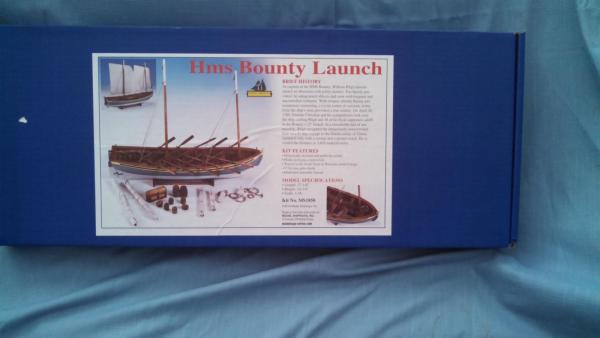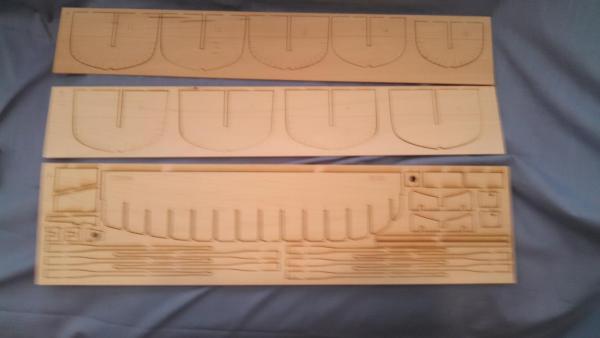-
Posts
5,777 -
Joined
-
Last visited
Content Type
Profiles
Forums
Gallery
Events
Posts posted by Canute
-
-
What was on the label? Model Master/Testors makes a gloss and a flat; guess a satin coat from them makes sense.
For most models, use a clear gloss (Gloss coat, Pledge with Future, Klear) for a coating under decals. Smooth surface avoids silvering of the decals. Everything gets some amount of weathering, so a satin or flat final coat looks best.
-
Model Master paints are made by Testors. They are more military a/c or armo(u)r related. Come in both enamel and acrylic, although the acrylics have a more limited selection.
You'll see many paints with FS numbers. These are Federal Spec numbers, used in the US post WWII. If it's a 3XXXX, it's flat. If its a 1XXXX, it's a gloss. Don't think anybody makes satin finish paints in the FS2XXXX line.
HTH
-
Something about holding that book or magazine; works for me.

That being said, some kit producers in other hobby fields now do their instructions on CD or ask you to download off their sites. The nicest aspect is the instruction pictures are in color. How many of us have tried to interpret a grey scale picture to get correct part placement. And the instructions can be spelled out, instead of some cryptic phrases. Closer to a practicum. And I can prop the tablet/laptop on the bench and work from it.

It's another tool in your tool kit.
-
Gents, thanks for the likes. It's been too long. Between the holiday and some real world "gotta do's", I have accomplished zilch in the ol' boatyard.

Keith, that started me thinking about the boat's colors. Right now, I'm planning to stain the frames and such a Golden Oak. Show the wood off. Ala Cap'n Steve.
Do I paint the outside stock (meaning as specified in the instructions) or do I do something different. This launch is a typical ship's boat of the late 18th Century, isn't it. Would the Captain use it as his "Barge"? I'm leaning towards a Forest Green in place of the grey. Would that shade be appropriate?
I have a sharp knife and chisel and will begin the rabbet on the keel tomorrrow. The keel segments are glued up under a short section of used rail, about 15-20 pounds, to reduce the likelihood of warping.
-
I'm having the same issue, no visible attachments.
 Any possibility of a re-do, please. I'm running on a current version of Fire Fox, FWTW.
Any possibility of a re-do, please. I'm running on a current version of Fire Fox, FWTW. -
Welcome to MSW. Very nice joinery.
-
-
Rob,
the file appears to be rounding your inside corners. Use your chisel and or #11 blade to carefully "sweeten up" those corners.
Nice work on the frames.
-
Greetings all,
My first foray into building a wooden vessel is this gem. I've been lurking a little while, as I've been evaluating my tool chest and selecting this build. Over the years, I've done any number of wooden structures and car kits, as a model railroader. Thought I should learn how to twist straight boards into boats aka planking.
In my prior endeavors, we sealed and stained before we put any glue on any surfaces. Plus we had to fight warping wood ( due to using water based paints) with extra bracing. Should I treat the wood before any construction? Since this is primarily a basswood boat, should I apply some MinWax preconditioner? How about the cherry frames? Since I'll have to soak these to bend them, I suspect they get taken care of after the boat come off the mold.
A few of the obligatory pix are attached:
-
-
Gee whiz, Cap'n. That's only half my top speed. On a good day. Get better soon, but be safe.
-
'Tis no fun, to doeth deeds wrong handed. Didst breaketh me wrist whilest in a blizzard. Och, the paine didst feel. Spendeth weeks to the number of seven wearing a fixing device.
Dost feel thy paine, Cap'n.
-
Rob,
Patience, grasshopper! I think I'd do one frame to check if my cutting & fitting techniques were good. This isn't a race; precision does count. Relax and enjoy the build.

-
Inverting the bottles works, too. Some old square Floquil bottles, too. But, I will stir the heck out of the paint and maybe even strain it before using it.
-
The sealer material in model airplane "dope" is talcum powder.
Scalecoat, a model railroad solvent based paint, also makes a sanding sealer. Takes many coats and buffing out with superfine steel wool to turn wood parts into steel siding on a boxcar. But for wood parts looking like wood, it works well.
And some craft store chains, like Micheal's in the States, also carry sealer in aerosol cans.
-
-
Aye, Cap'n. Ye've finally let the hands partake of these spirits. No matter they be Black Strap, dago red or goodly rum. We be missing a good wet! Let's hear it for the Cap'n, lads!

-
Julian, try Micro-Scale's Liquid Decal film. Brush a little on a corner of the old decal to see how it covers. And you may be able to take some of the yellowing out by putting it in some bright sunlight.
-
Jonny,
you'll have to learn the art of compromise; an art not seen much these days. Maybe you can rig up a storable building surface for your ships and another for her cards.
I'm fortunate my Admiral/spouse of 31+ years participates in some of my hobbies (although not this one) and encourages me. Yep, she's a keeper.

-
Cardely, that would be a pretty good assumption. Unless the artist spent a lot of time at sea, observing the action first hand, he'd be working on estimates. Back in the day, I suspect they only drew details of what they saw from the beach. Navies back then weren't too concerned about the small details of their ships involved in action.
Some of the current maritime and aviation artists can take months to do "prototypically correct" paintings. My flying squadron wanted a profile painting as a nice piece of memorabilia. We had to take a large number of photographs of the aircraft and shipped the package off to the artist. About 3 months later, we got a draft copy. After correcting that we waited another few months and got a very nice rendering of our Phantom.
-
Ah, another Microsoft "feature".
 I'd try FireFox; used it for several years now.
I'd try FireFox; used it for several years now. -
Hello. May I grab a seat here to follow along. Looks like a good primer for rigging. Best of luck.
-
Mark, let me "throw my nickel in the grass" (old fighter pilot expression) and add my appreciation for the work you are doing. I want to some day get to that level and I want to see excellent examples for my journey. And the other stuff; that's not so much. Your work is something I will follow closely, as the best of examples.
Just as a padawan follows a master to become a Jedi.
Thank you for showing us how to do it.

- mtaylor, Bill Hime, themadchemist and 1 other
-
 4
4
-
North West Short Line or NWSL makes a lot of model railroading goodies along with these tools. I've used a few of them - gears, diesel wheels, electric motors.
The various cutters work for a time, but eventually the groove where the razor blade contacts the Masonite or cutting mat gets to a point where the cuts wander. I have seen folks put two small pieces of tool steel either side of the spot where the 90 degree cut fall on the Masonite versions parallel to the blade. This leaves a thin slot for the blade to cut through and supports both sides of the cut stock. You can turn the self healing mats and do the same thing.
Use fresh blades, dull ones just bend the thinner stock. And it's more pronounced in thicker stock. I'd get a small miter (or mitre) box for that.






HM Mortar Vessel Convulsion by jonny.amy - FINISHED - Caldercraft
in - Kit build logs for subjects built from 1801 - 1850
Posted
Jonny, I like how you think.
The Admiral only said she wanted the table available for yuletide festivities. She doesn't want you lock, stock and barrel, too. so, a give a little, get a little going on here. Keep brain somewhat engaged on ship building. Think happy thoughts.
Nice cutter! I would think as long as it was for personal use, you'd be OK, but see the lawyers/barristers if worried about the legalities.
Have a Merry Christmas and a Joyous New Year!